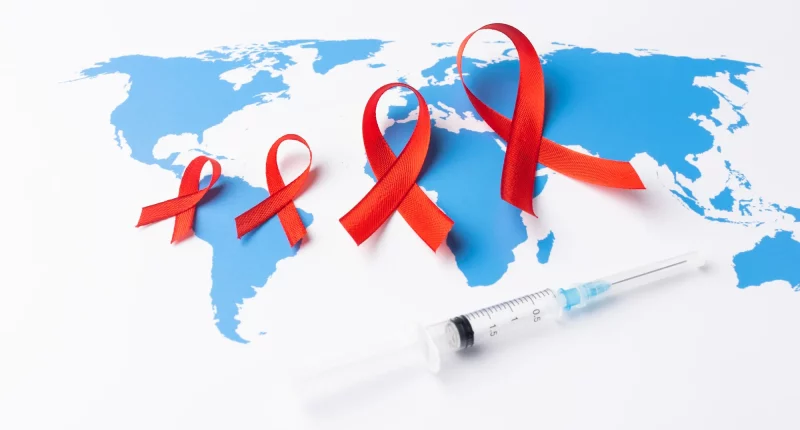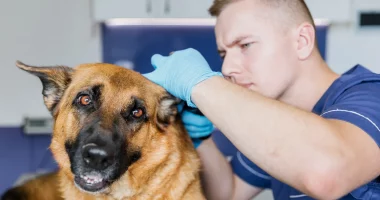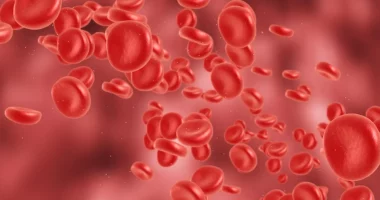AIDS, or Acquired Immunodeficiency Syndrome, represents the advanced stage of HIV or Human Immunodeficiency Virus infection. It manifests when the immune system becomes severely compromised due to untreated HIV. Diagnosis of AIDS typically occurs when a individual’s CD4 blood count drops below 200 cells per cubic millimeter, or when they develop opportunistic infections.
Due to medical progress, individuals with HIV who undergo proper treatment seldom progress to stage 3 HIV, known as AIDS. With proper management, they can lead long and healthy lives.
As of 2022, 76% of individuals with HIV were receiving antiretroviral therapy. This treatment has contributed to a 51% decrease in AIDS-related deaths since 2010.
Several factors influence the progression of HIV to AIDS in individuals. These include age, the body’s immune response to HIV, accessibility to standard healthcare, concurrent infections, genetic predisposition to specific HIV strains, and the resistance profile of the virus itself, with certain strains demonstrating resistance to antiretroviral medications.
Symptoms
The symptoms of AIDS can be quite varied and may include:
- Feeling extremely tired all the time, even without a clear reason.
- Losing weight quickly without trying to.
- Not feeling hungry and not wanting to eat much.
- Having rashes or being very sensitive to touch on your skin.
- Getting fevers often, especially at night, or having sweats while you sleep.
- Finding your neck, armpits, or groin glands swollen.
- Having diarrhea for more than a week.
- Having sores on your private parts or around your bottom.
- Getting ulcers in your mouth.
- Seeing strange patches on your skin, inside your mouth, or around your eyes or nose. These patches might be purple, pink, red, or brown.
- Having lung infections like pneumonia.
- Feeling very sad and down, or having trouble remembering things clearly.
These symptoms can vary from person to person, and not everyone with AIDS will experience all of them. If you notice any of these signs, it’s important to see a doctor for proper diagnosis and treatment.
Treatment
The treatment of AIDS primarily involves antiretroviral therapy, which consists of a combination of treatments designed to reduce the HIV virus, slow down its development, and improve the immune system. Antiretroviral drugs work by targeting different stages of the HIV life cycle, preventing the virus from replicating and reducing the viral load in the body.
ART typically involves taking a combination of three or more antiretroviral medications from at least two different drug classes. This approach, known as combination therapy or highly active antiretroviral therapy (HAART), is highly effective in controlling HIV and preventing the progression to AIDS. It helps to keep the virus at undetectable levels in the blood, allowing the immune system to recover and function better.
In addition to ART, managing AIDS may involve treatment for opportunistic infections, which are infections that take advantage of a weakened immune system. These infections can include bacterial, fungal, viral, and parasitic diseases. Depending on the specific opportunistic infection, treatment may involve antibiotics, antifungal medications, antiviral drugs, or other therapies.
Furthermore, supportive care and management of symptoms are essential components of AIDS treatment. This may include addressing nutritional needs, managing pain and discomfort, providing mental health support, and offering social services to improve overall quality of life.
Regular medical monitoring and adherence to treatment regimens are crucial for the successful management of AIDS. Close collaboration with healthcare providers, including infectious disease specialists and HIV/AIDS specialists, is essential to tailor treatment plans to individual needs, monitor treatment effectiveness, and address any complications or side effects that may arise.
Causes
The primary causes of AIDS:
HIV Infection
AIDS is caused by the Human Immunodeficiency Virus (HIV), which attacks the human defense system, specifically targeting CD4 cells (also known as T cells), weakening the body’s potential to fight with diseases and infections.
Unprotected Sexual practice
Participating in unprotected sexual practice with an HIV-positive partner or a partner whose HIV status is unknown significantly increases the chance of HIV spreading.
Sharing Needles
Sharing syringes or needles contaminated with HIV-infected blood, commonly associated with intravenous drug use, poses a high chance of HIV spreading.
Mother to Child Transmission
It can be spread from a mother with HIV to her newborn during pregnancy, childbirth, or while breastfeeding. But, with correct medical care and interventions, the chance of transmission can be mainly reduced.
Organ Transplants and Blood Transfusions
In the past, before severe screening measures were applicated, HIV transmission through organ transplants and blood transfusions was a significant cause of infection. However, modern blood screening techniques have greatly decreased this risk.
Occupational Exposure
Nurses and others may be at high chance of HIV spread through unintentional needlestick injuries or exposure to HIV-infected bodily fluids or blood in healthcare settings. Strict adherence to infection control protocols can minimize this risk.
Lack of Access to Healthcare and Prevention Services
Limited access to HIV testing, counseling, prevention education, and healthcare services can lead to the spread of HIV and the development of AIDS, particularly in underserved or marginalized communities.
Understanding these causes and taking preventive measures, such as involving in safe sex, preventing sharing needles, undergoing HIV testing, and accessing appropriate medical care, are essential in combating the spread of HIV/AIDS.
Diagnosis
Doctors utilize various kinds of tests to detect out if someone has HIV. These tests can tell if the virus is in the body. But there’s a period of time between getting infected with HIV and when these tests can detect it. This time is called the window period, and it can be different for each person and the kind of test used.
Here are the three main types of HIV tests:
- Nucleic Acid Test (NAT): This test looks for the virus in the blood. It can find HIV soon after exposure, usually between 10 to 33 days.
- Antigen/Antibody Tests: These tests check for specific substances and antibodies in the blood. They can detect between 18 to 90 days after affected with HIV
- Rapid and Self-Tests: These tests look for antibodies in blood or oral fluids. They can detect between 23 to 90 days after affected with HIV
Healthcare workers can test someone’s blood for HIV antibodies. Or, people can use home testing kits to check themselves.
If someone thinks they might have been exposed to HIV within the last 72 hours, they should talk to a healthcare provider about something called postexposure prophylaxis (PEP). This is a treatment to help prevent HIV infection after possible exposure.
Prevention
Preventing AIDS is important for maintaining public well-being and health. Here are some key strategies:
Preventing AIDS requires a multi-faceted approach that includes promoting safe sexual practices, advocating for harm reduction strategies among injecting drug users, promoting regular HIV testing, providing access to preventive medications like PrEP for those at high risk, and ensuring comprehensive sexual health education for all. By implementing these strategies, individuals and communities can decrease the transmission of HIV and the incidence of AIDS, ultimately contributing to healthier societies.
Outlook
The future for someone with AIDS can be challenging if they don’t get treatment. Without treatment, they might live for about 3 years on average.
Individuals with AIDS also have a lot of the HIV virus in their body, which makes it very easy for them to pass the HIV virus to others.
If someone starts treatment for HIV when the disease is more advanced, it can mean there’s more time for the immune system to get damaged. This might lead to a less positive outcome and a shorter life.
But there’s hope. If someone starts HIV treatment as soon as possible and takes it the way their doctor tells them to, they have a better chance of living a long and healthy life. So it’s important to start treatment early and stick to the treatment plan.
When to consult a doctor
Knowing when to reach out to a doctor is crucial if someone notices any symptoms of HIV at any point. It’s important to get diagnosed and start treatment quickly. This not only helps them stay healthy but also stops HIV from getting worse and prevents passing it to others. So, if someone thinks they might have HIV or notices any symptoms, it’s essential to see a doctor right away.
Summary
AIDS is a serious condition caused by HIV, with symptoms like fatigue, loss of weight, and infections. Treatment, including antiretroviral therapy, can help manage HIV and prevent AIDS development. Early diagnosis through various tests is crucial, with prompt treatment significantly improving prognosis.
Prevention strategies include safe sex, avoiding needle sharing, and regular testing. Without treatment, AIDS can lead to a shorter life expectancy and increased risk of transmission. Contacting a doctor at the first sign of HIV symptoms is essential for timely diagnosis and treatment initiation.









